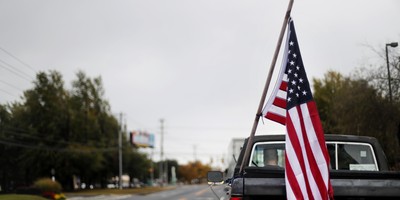It's the last few weeks of summer. For those of us with children in school, this is our last chance to get away before becoming engulfed in school schedules, homework, activities and carpool. For children, it is their last chance to be carefree, sleep in and play with friends.
For our family, the destination of choice for end-of-summer outings is most often the beach in Georgia. For us, the beach represents purely summer fun, since it's a five-hour drive from our home in Atlanta, and we rarely visit it during the school year.
For me, the beach is about more than getting away, it is also about going back to basics. Long walks on the beach provide an opportunity for reflective thought, as the sound of the waves fills my ears and water laps at my feet. Instead of listening to songs from iTunes, I listen to the waves. They remind me that, whatever my trials and tribulations at a particular moment, they too shall pass -- to be replaced by something else -- as the rhythm of life continues.
The shells under my feet remind me of the power of waves. Shells that were once sharp are now worn smooth from the repetitive clashing against one another. The occasional sharp shell reminds me that sometimes it takes more time to dull sharp edges. So it is with life.
This morning, as the sun rose over the ocean, the sky's pale pink quickly changed to flaming pink, then turned white and blue. Beauty to remind me of the splendor of God.
Georgia's beach houses not only beauty, but also history.
Nearby lie the ruins of Fort Frederica. Established in 1736 by Gen. James Oglethorpe as the military headquarters for Britain's new colony of Georgia, the fort played a key role in protecting the British colonies from the Spanish, who had claimed Florida. At its height, Fort Frederica was home to about 1,000 people on the banks of the Frederica River.
Recommended
The Spanish fort of St. Augustine was located 75 miles away, and the British established Fort Frederica with the understanding that they would have to resupply their military outpost. It was not designed to be self-sustaining, although people who helped establish the fort were expected to help provide for the soldiers quartered there. Residents were carefully chosen by Oglethorpe based on their skills.
The fort covers 40 acres. At one time, it was surrounded by a rampart (earthen wall), a palisade and a dry moat. But now, only a few signs of it are left: the storehouse, remains of the wall and foundations of the houses. They remind us that what we might view as permanent is indeed only temporary.
Six years after its founding, British soldiers at Fort Frederica played a key role in the conflict with the Spanish, defeating them at the Battle of Bloody Marsh on St. Simons Island and ending the Spanish effort to claim Georgia.
A year later, more than 1,000 people were living at Fort Frederica.
But after the British and Spanish signed a treaty in 1748, the soldiers at Fort Frederica were no longer needed for defense and were withdrawn. Without the military and the extra provisions from Britain, about half of the civilians at Fort Frederica left. A decade later, in 1758, a fire swept through Fort Frederica.
Fort Frederica lasted only 22 years, but it had a lasting effect. Georgia, a British colony, was one of the original 13 colonies in the United States of America.
Our time at the beach is almost over. Soon we will be engrossed with daily activities of school, work and activities. While we might view these activities as permanent, and often feel as thought they might never end, they only inhabit a temporary part of our lives, a transitory part. As we leave, I hope we take with us the knowledge that all is temporary except what is created by God.

























Join the conversation as a VIP Member